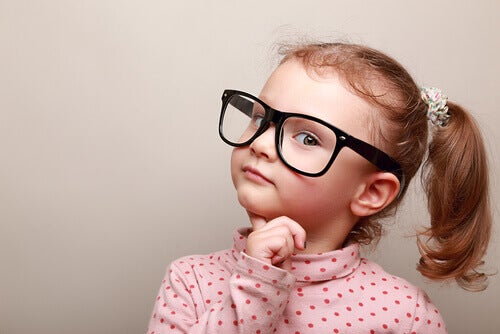One of the most complex educational issues in childhood is how children’s thinking about good and evil works. To teach good and evil, it is necessary to set a coherent example, but it is also important to understand what you think about it.
Until recently it was thought that young children were not able to make adequate moral judgments because they did not take into account certain aspects, such as intentionality, however, some studies have shown that children are able to evaluate what is and what is not. much more similar to adults than previously thought.
- Swiss psychologist Jean Piaget.
- Known for his theory of cognitive development.
- Explained that children evolve into stages of moral reasoning as they grow up.
- Other psychologists have also studied how moral development occurs and how children’s thinking about good and evil works.
To study moral reasoning, Piaget showed children little stories. After gathering many responses to various morality-related stories, Piaget stated that children do not take into account the intentions of judging the morale of others and focus on facts, not intentions.
Psychologist Lawrence Kohlberg also presented a theory of moral development. Kohlberg presented some moral dilemmas to identify children’s thoughts about good and evil. For Kohlberg, young children between the ages of 2 and 10 determine what is right and what is wrong citing punishments or rewards. If anything results in punishment, it’s bad. However, the answer is not so simple.
Don’t kids really know the intent? More recent research shows that step-by-step theories are misleading, in this sense, several studies have shown that if researchers emphasize the intentions of characters throughout a story, using images or games for children to understand, they will incorporate intentions into their judgments.
One of the reasons to focus on intentions is that it is difficult for a child to remember all the details, including intentions, in a given scenario. If children are not asked to remember the intentions behind an individual’s actions, they base their judgment on the most recent feature of a story: the outcome.
How important are intentions and results? Research with children and adults suggests that the judgment of an intention may change depending on the outcome of an action. In fact, our beliefs about the intentions of others change depending on whether the outcome of their action is good or bad. If an action has a bad outcome, children and adults are more likely to think the person had that intention.
Why are children and adults more likely to say that actions with negative side effects are intentional? An answer is a violation of the rule. In this sense, the philosopher Richard Holton states that our intuitions about intentions are explained in the event that an action violates or maintains a standard.
If a rule is violated, we consider the action to be intentional, on the contrary, if a rule is met, we do not consider the action to be intentional, i. e. we believe that people follow the rules effortlessly, but make a conscious effort to break them.
This is called the Knobe effect, a particular asymmetry in the attribution of intentionality to a person in relation to the expected side effects of their action, which depend solely on the moral assessment of the effect and without further change in the judged situation. In other words, most people tend to see actions that have negative as intentional consequences and actions that have positive as unintended consequences, so we consider negative side effects to occur intentionally, but not good ones.
Recent research suggests that children’s moral reasoning is more complex than previously thought. Initial studies using moral dilemmas were flawed due to their complexity and lack of understanding of children’s cognitive abilities.
According to the latest research, we know that when questions are asked in a clear and understandable way, children reflect the tendency of adults to consider the intentions and results in their moral judgments.
Kids realize what’s right and what’s wrong. The key for them to learn to distinguish between what is right and what is wrong is to make the situation understandable by their abilities and their ways of perceiving reality.

